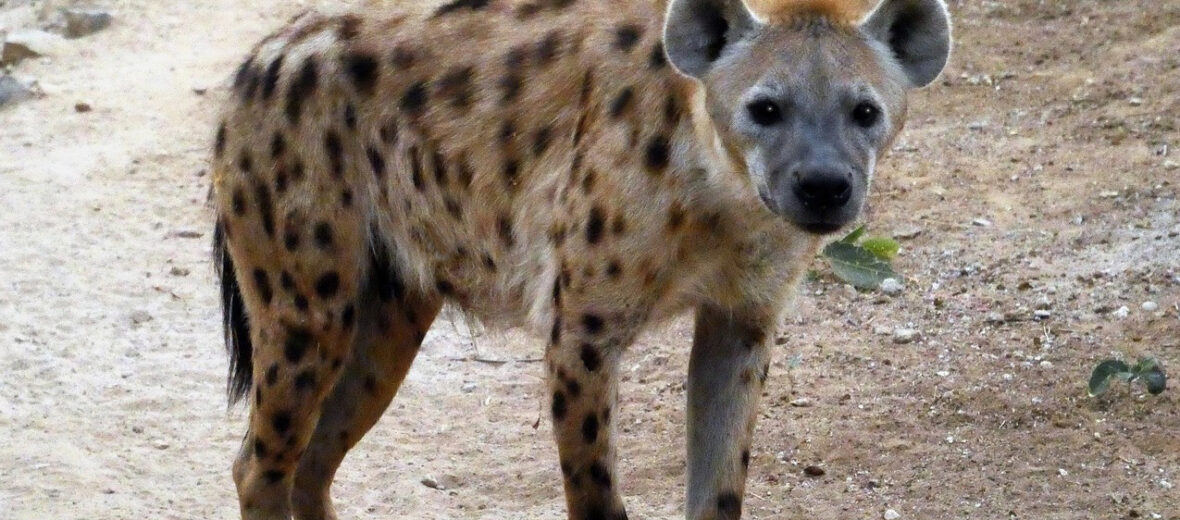
The spotted hyena, also known as the laughing hyena, is native to Sub-Saharan Africa. When people think of hyenas, they typically think of laughing calls and a voracious appetite! They are also fiercely competitive and have extremely powerful jaws! They live in grasslands, savannas, sub-deserts, and forests of Africa and Asia. These critters are listed as Least Concern by the IUCN.
First the Stats…
Scientific name: Crocuta crocuta
Weight: Up to 140 lbs.
Height: Up to 3 feet
Lifespan: Up to 20 years
Now on to the Facts!
1.) The hyena will hunt prey animals and also eat carrion.
2.) Hyenas live in large territorial packs that can have up to 80 members.
3.) They are nocturnal (active at night) and this is when they hunt.
4.) Female hyenas are larger and more dominant.
5.) These critters mark their territory via terrible smelling white droppings produced from their anal ducts.
But wait, there’s more on the hyena!
6.) The hyena uses a variety of postures, stances, and calls to communicate with other members of their pack.
7.) Typically, the characteristic “laugh” of the hyena is a signal to the other members that food has been found.
Did you know…?
A hyena’s bite exudes 1,000 psi (4,450 newtons) of force, which is strong enough to crush a femur!
8.) Hyenas have been documented as being cannibalistic. If food is really scarce they will turn on the young and weak!
9.) Cubs have been observed fighting each other in order to establish dominance and achieve the best order in the feeding chain. This fight sometimes ends up in a fatality.
10.) The female gives birth to 2 – 4 cubs and cares for them for about 4 weeks.
Now a Short Hyena Video! (Don’t try this at home!!!)
Also, check out the Critter Science YouTube channel. Videos added frequently!
Want to suggest a critter for me to write about? Let me know here.



